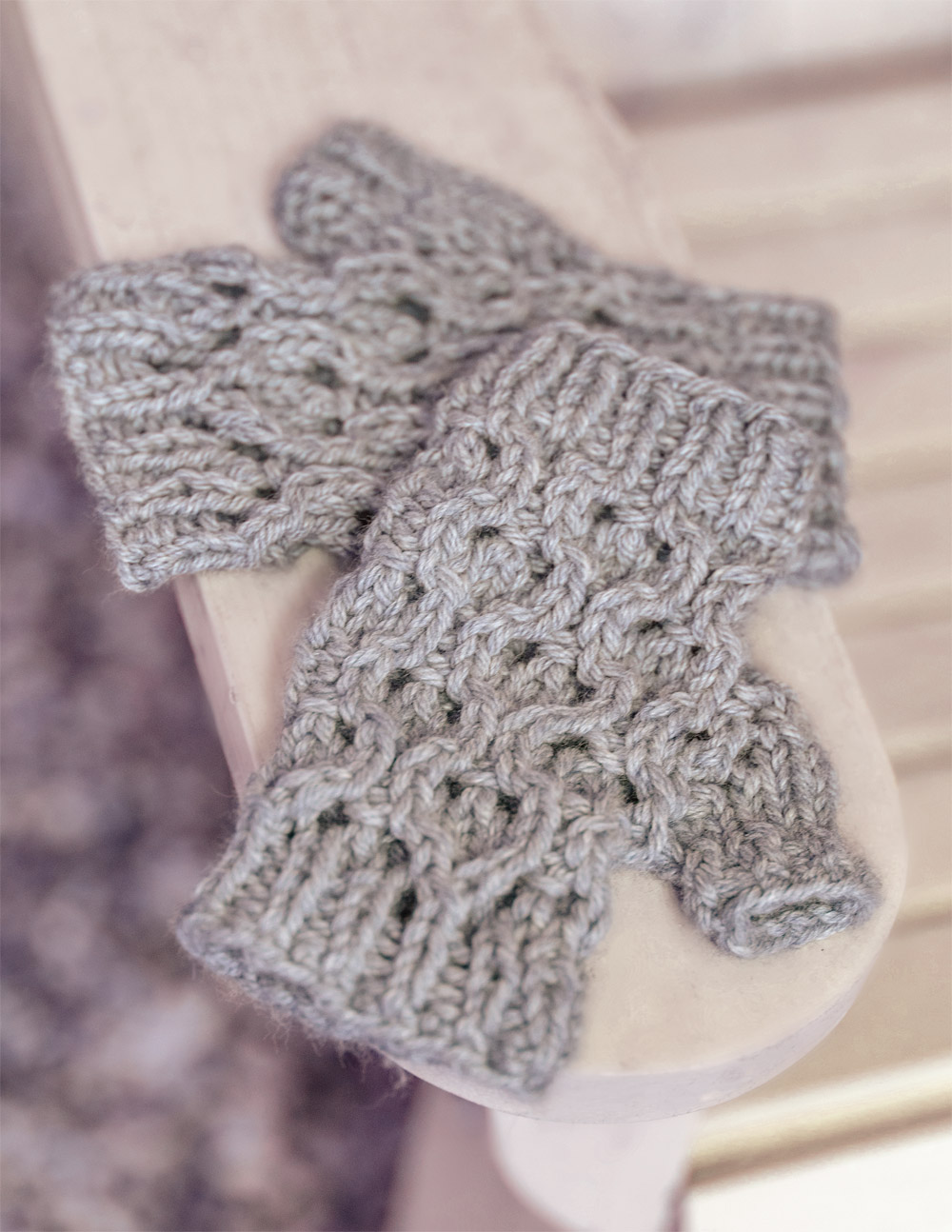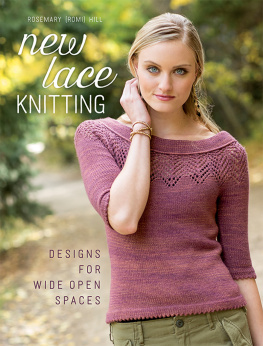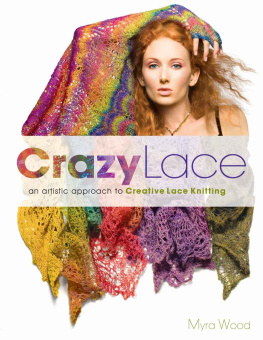
Published by Stackpole Books
An imprint of The Rowman & Littlefield Publishing Group, Inc.
4501 Forbes Blvd., Ste. 200
Lanham, MD 20706
www.stackpolebooks.com
Distributed by NATIONAL BOOK NETWORK
800-462-6420
Copyright 2019 by Barbara Benson
Photography copyright 2019 by Gale Zucker
All rights reserved. No part of this book may be reproduced in any form or by any electronic or mechanical means, including information storage and retrieval systems, without written permission from the publisher, except by a reviewer who may quote passages in a review.
The contents of this book are for personal use only. Patterns herein may be reproduced in limited quantities for such use. Any large-scale commercial reproduction is prohibited without the written consent of the publisher.
We have made every effort to ensure the accuracy and completeness of these instructions. We cannot, however, be responsible for human error, typographical mistakes, or variations in individual work.
British Library Cataloguing in Publication Information available
Library of Congress Cataloging-in-Publication Data
Names: Benson, Barbara, 1973- author.
Title: Big yarn, beautiful lace knits : 20 shawls, hats, ponchos, and more in bulky yarn / Barbara Benson.
Description: First edition. | Guilford, Connecticut : Stackpole Books, 2019. Identifiers: LCCN 2018052419 (print) | LCCN 2018054191 (ebook) | ISBN 9780811767804 (electronic) | ISBN 9780811737876 (pbk. : alk. paper)
Subjects: LCSH: Knitting. | Knitting-Patterns. | Yarn.
Classification: LCC TT820 (ebook) | LCC TT820 .B49 2019 (print) | DDC 746.43/2dc23
LC record available at https://lccn.loc.gov/2018052419
 The paper used in this publication meets the minimum requirements of American National Standard for Information Sciences-Permanence of Paper for Printed Library Materials, ANSI/NISO Z39.48-1992.
The paper used in this publication meets the minimum requirements of American National Standard for Information Sciences-Permanence of Paper for Printed Library Materials, ANSI/NISO Z39.48-1992.
First Edition
Printed in the United States of America

INTRODUCTION
T he word lace when used in conjunction with the word knitting evokes images of a delicate filigree of holes scattered across a field of fabric made up of fine yarn. In the Orenburg knitting tradition there are even shawls known as wedding ring shawls because they are knit of such delicate yarn the entire shawl can be drawn through a wedding ring. I love this type of lace and have knit many projects using lightweight yarn in ornate lace patterns.
However, there is something in me that always goads me in the direction of the notorious What if?: What if I did this differently? In my first book, Mosaic & Lace Knits: 20 Innovative Patterns Combining Slip-Stitch Colorwork and Lace Techniques (2017), the result of asking What if? was combining colorwork, which is traditionally regarded as a dense, warm fabric, with the open airiness of lace. As I further pondered lace, I started wondering what these beautiful patterns would look like writ large. I started asking myself: If instead of fine yarns I used heavier, even bulky yarns, what would that look like?
The answer is found in the pages of this book! By exploring a wide assortment of bulky and chunky yarns, I developed a collection of projects that range from bold and graphic to patterns that somehow maintain their delicate appearance despite their heft. And, of course, since they are worked in big yarn, with even bigger needles, they knit up much more quickly than their lightweight yarn counterparts.
While developing the patterns in this book, I have learned that not all lace patterns play well with all yarns. My experimentation has shown that smaller motifs take on bold new looks when knit in bulky yarn, simple mesh magnifies into impressive panels of pop art, and double yarn overs create an airy effect that lightens up even the heaviest of yarns. It has been a fun learning process, and I look forward to sharing it with you.
The Patterns


Getting Started with Lace
What Is Lace?
At its most basic, lace is making holes in your knitting on purpose. When you make a hole with a yarn over, you have added a stitch to your stitch count. Therefore, unless you want to increase your stitch count, you need to pair the yarn over with a decrease to return your stitch count to its original number. When pairings of increases (yarn overs) and decreases are arranged in attractive patterns, the end result is lace! A further refinement of this explanation includes knitted lace versus lace knitting. Lace knitting is the term used when all of the yarn overs and their paired decreases are confined to one side of your knitting, typically the right side. The return row, usually the wrong side, is then simply knitted or purled. Knitted lace, by contrast, is the term used when yarn overs and decreases are found on both sides of your knitting; there are no rest rows.
Reading a Chart
SYMBOLS
A traditional knitting chart illustrates what the finished stitch pattern will look like if viewed from the right side of the fabric. The symbols that represent the stitches are also depicted as they appear from the right side. Therefore, when you are knitting back and forth in rows, an empty box represents a knit stitch when working on the right side, but it represents a purl stitch when working on the wrong side. Always consult the stitch legend for each pattern and familiarize yourself with what each symbol means before you start knitting.

DIRECTIONALITY
To read a chart, always start reading a row or round where the number for that row or round is located. Row 1 will usually be located in the bottom right, but not always. Right-side rows are read from right to left; wrong-side rows are read from left to right. Work each stitch as indicated by the symbol as defined in the stitch legend. If you are working back and forth in rows, you will read the next row in the opposite direction from the row below. If you are working in the round, you will read every round from right to left. Proceed in this manner until you have completed the chart as instructed by the pattern.
REPEATS
There are frequently marked sections of a chart that are repeated across a row or round. These portions will be highlighted with a repeat box that defines the edges of the repeat. Always refer to the instructions to determine how many times you will need to repeat the indicated stitches. Often repeated sections fall between groups of stitches that do not repeat. Pay careful attention to how many non-repeated stitches surround the repeated sections, as they will help you understand how many times the repeated sections are worked. The Drunk Spider cowl-ette is a good example of repeats framing a section of non-repeated stitches.
NO STITCH
At times the number of increases and decreases do not balance across a row or round or shaping creates extra stitches in a row or round. When this happens, it is necessary to use a no stitch symbol in the chart. These symbols help to keep motifs and patterns lined up so you can better compare your knitting to the chart. The no stitch is represented by a gray box and is simply a placeholder. It is exactly what it saysnot a stitch. It is telling you that a stitch is missing on the row or round you are working.
Next page




 The paper used in this publication meets the minimum requirements of American National Standard for Information Sciences-Permanence of Paper for Printed Library Materials, ANSI/NISO Z39.48-1992.
The paper used in this publication meets the minimum requirements of American National Standard for Information Sciences-Permanence of Paper for Printed Library Materials, ANSI/NISO Z39.48-1992.


